share
The power of public relations is well-known in the modern business world, and all companies and startups put at least some effort into PR.
However, often such efforts don’t bring the expected results, despite considerable expenses of time, money, and other resources. In most cases, the reason for that is the lack of a well-thought-out PR strategy closely linked to the company’s overall business strategy.
Simply put, a company that just tries to “do something for PR” will always lose the battle for the customers’ attention to a company that executes a good strategy, regardless of their respective budgets.
However, “What is a good PR strategy?” is a pretty complicated question, so before we dive in, let’s answer some popular questions.
PR Strategy: Basic Questions
PR Strategy vs. Marketing Strategy?
There is an overlap between PR strategies and marketing strategies. After all, working on brand awareness is a core component of a long-term PR strategy.
However, effective marketing is impossible without effective handling of media relations, and PR covers not only interactions with customers and sales but the public image of the company and even its relations with authorities in some cases.
So PR and marketing strategies should complement each other.
PR vs. Branding
Both branding and public relations strive to improve the audience’s awareness of the company. However, they achieve this goal in different ways.
While branding primarily focuses on visual or audio-visual recognition, such as logos, color schemes, UI design solutions, and so on, public relations are about communications.
Digital PR vs. Traditional PR
Nowadays, the line between these terms is extremely thin and not worth talking about. The vast majority of PR activities happen online in a digital format. It has long become impossible to conduct any public relations activity strictly offline and get any half-decent result. So we can say that all PR today is digital PR.
However, it doesn’t mean that offline events lost their importance completely. On the contrary, offline conferences, meetings, expos, and other events are extremely important. Especially if your target audience is industry professionals, but every such event nowadays has a huge digital footprint as well.
Why Is PR Strategy Important?
It is impossible to work on public relations without a clear and well-defined goal, and it is also impossible to work cost-effectively on achieving a goal without a comprehensive and well-thought-out plan on how to reach it.
Reactive and sporadic work on public relations won’t bring satisfying results and will lead to inefficient spending.
Thus, the development of a PR strategy is a cornerstone of all successful PR campaigns and, by extension, of any successful marketing strategy.
Is PR Strategy a Strictly Long-Term Matter?
Not at all. Public relations strategies are invaluable in crisis management situations. A proper response to a negative situation requires prompt development of a strategy for reaching the best possible outcome.
In some cases, it is possible to not only mitigate the losses but even improve the company’s image if a proper strategy is implemented promptly.
Thus, do not think that public relations strategies are rigid and inflexible – it is possible to stay flexible and adjust your plans on the fly so they are relevant to the current situation.
Is It Possible to Promptly Develop a Strategy in Response to Negativity?
For an in-house PR team with limited resources, the task may indeed be quite overwhelming, especially since the response should be fast and precise, and there is no room for error. But for a large and experienced PR agency, it is a habitual task.
Here is a breakdown of how the ICODA marketing agency worked to mitigate negativity in a very short time.
What Does a PR Strategy Include?
A comprehensive public relations strategy has a few key components:
- Research and data analytics – both for the market as a whole and specific market niche.
- A set of clearly defined goals
- Tools and media available
- A strategic PR plan for using said tools
- Budget
- Provisions for emergency amendments to the strategy
- Tools for monitoring the strategy effectiveness
We will cover every point further down the line.
What Is a Strategic PR Plan?
It is a set of tools, methods, and tactics that will be used to achieve public relations goals, as well as how they will be used.
It is the part of the overall PR strategy that defines how the defined goals will be achieved.
How Does One Develop a PR Strategy?
PR strategy development is a complicated multi-step process that varies a lot on a case-to-case basis. However, we can provide you with a framework that will cover all the basics of a good PR strategy.
Step 1. Research and Analysis
All subsequent steps will be based on this data and its analysis, so it is paramount that research is taken seriously.
Competition Analysis
Analyze how your competitors take care of public relations: what works in your market segment and what doesn’t. After all, any good idea deserves to be stolen.
Results of Your Previous PR Efforts
Analyze the past year of your business’ PR efforts and see what was efficient and what wasn’t. Here are some metrics that determine the efficiency of your efforts:
- Mentions in media
- Trafic KPIs
- Social media posts engagement
- Results of influencer marketing
Audience Analysis
Precisely determine your actual audience. Misunderstanding the actual current audience is a very common mistake for businesses.
Leave Your Biases Behind
Never trust your “gut feeling” or presume that something is “self-evident” – use only actual data.
The optimal solution is to outsource research to a professional team, such as ICODA. This way, you can be sure that the researchers were objective and thorough.
Step 2. Set the Goals
Without clearly determined goals, it is pointless to even dream of an effective PR strategy. It is tempting to just “use the PR tactics that work” and hope for the best, but outlining the goals must be done first. And applies to both long-term strategy development and public relations crisis response.
PR Goals Should Be Aligned With Your Business Goals
Public relations are an integral element of business and should assist the company in achieving its overall goals.
For example, if the company wants to become a market leader for blockchain node validator software, the PR strategy objective should be to establish the company as the most reliable and innovative software provider in the minds of major node validators.
SMART Goals
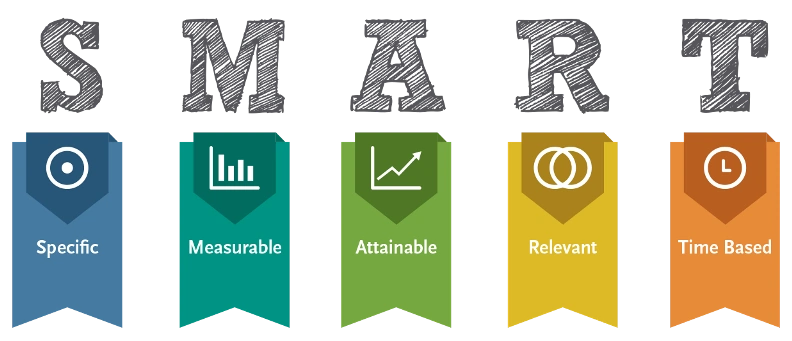
The so-called “SMART method” is a very old but still very effective approach to setting your PR goals. ‘SMART” is an abbreviation of what your goals should be.
- Specific. Your goals should be directly linked with your target audience, your market segment, and your business.
- Measurable. There should be a clear metric (or several metrics) for every goal, so it is possible to objectively determine whether it was achieved.
- Achievable. The resources your company has available are always limited. There is nothing wrong with being ambitious, but you also have to be realistic.
- Relevant. The goals you set should remain relevant after the strategy has been implemented.
- Time-based. Set up specific timeframes for every goal of your PR strategy. Without such timeframes, it wouldn’t be possible to correctly assess the strategy’s effectiveness.
Step 3. Determine the Target Audience
Depending on the goals, you may decide to focus on your current audience or, on the contrary, expand the demographics your PR is tailored for.
However, it is never a sound idea to alienate the user base you already have, so never forget about your loyal customers!
The target audience determines both the messages and the tools to get these messages across. So determining the target audience correctly is a key element of a PR strategy and its success.
Step 4. Formulate Key Messages
Key messages are at the very core of any PR campaign, so treat this step very, very carefully.
The Best Way to Create a Key Message
Ask yourself three questions:
- What impression of my company do I want the audience to have?
- What is the mission of my company?
- How is my company better than the competition?
The answer is your key message. But there are also a few additional requirements.
The Necessary Traits for a Key Message
- Targeted. The message should be tailored to your target audience specifically.
- Compelling. The audience should like the message and relate to it.
- Relevant. Your message should answer important questions or offer solutions to pressing issues for your audience.
- Simple. The shorter and simpler the message is, the higher its effectiveness becomes.
- Catchy. The message should stick with the audience. So get creative, and don’t be afraid to use humor.
Be Cooperative
It is sometimes tempting to use the image of a rebellious company that ruffles some feathers, but in practice, it is always more effective to collaborate and cooperate than to fight. So try to avoid open “wars” with other companies and avoid going against major trends in society or in your market niche.
Step 5. Determine the Media at Your Disposal
Armed with data about your target audience, key message, and budget, you can determine which media should be the priority for your PR strategy. Naturally, you should use every media outlet that becomes available, but due to the aforementioned factors, some media will suit you better than others, so you should set your priorities straight.
Owned Media, Paid Media, and Earned Media – What’s the Difference
Classification of media outlets as Owned media, Paid media, and Earned media is a very popular approach among PR professionals. However, it is not the only classification that should be taken into account.
Owned Media
Owned media refers to outlets owned and operated by the company. These include the company’s website, blog, social media pages, Youtube channel, media platforms, etc.
Paid Media
This group includes all media outlets that are paid by the company to increase its exposure and reach. Typically paid media include influencer content, sponsored articles, videos, and other content, as well as advertisements.
Earned Media
Third-party outlets increase the company’s exposure and/or create content about the company without payment. This category includes mass-media mentions, social media posts, word-of-mouth recommendations, online reviews, and so on.
Naturally, any company wants as much positive attention from the earned media. However, your PR strategies must use all three groups of media outlets – their reach ways in which they reach and engage the audience are different, so they provide different opportunities.

People Still Trust Mass Media
Despite the immense popularity of social media platforms and influencers, it is still worthwhile to focus your efforts on “traditional” mass media.

75% of adults in the US trust local media outlets, 56% – trust national news networks but only 27% trust the information they get from social media posts, according to Pew Research Center.
Social Media: Hard to Reach Out to Your Target Audience, but Still Possible
While it may be difficult to earn your audience’s trust through social media, it is still a crucially important tool for engaging your audience and getting invaluable feedback.
Moreover, if you’re targeting younger demographics, they display a higher level of trust in social media than older folks.
Industry-Specific Nuances
In addition to the aforementioned applications of social media, it is worth remembering that in some industries, social media platforms are the primary channels for promotion. The most pronounced example is the blockchain and cryptocurrency industry. There are many causes for this: from the demographics of crypto users to mainstream media mistrust of crypto.
Industry Media
If you’re targeting industry leaders or active enthusiasts of a certain industry or market, it is worth it to focus on specialized media outlets. They can easily have a disproportionately great influence on your target audience.
For example, Cointelegraph has much more influence over the crypto community than, let’s say, CNN, despite the huge difference in the number of visitors.
Step 6. Let Loose Your Team’s Creativity
Preparation of content for your project or company promotion, naturally, has to rely on analytics. However, don’t be afraid of creative experiments and remain flexible. If you see that some of your content has gone viral – lean into it immediately.
In other words, be as creative as you can be, but back up your creativity with online monitoring and analytics.
Don’t Shy Away From Humor
Humor and memes can become your vehicle for success. For example, here is a detailed breakdown of a PEPE Token success story. And its success was based on sheer hilarity and great PR strategies.
Step 7. Establish Partnerships
Long-term cooperation with influencers, media outlets, and other companies is much more efficient than one-time collaborations. Partnerships enable systemic PR campaigns which leave a much more noticeable footprint in the media space and the minds of the audience than one-offs with no follow-up.
Step 8. Monitor the Results
As was mentioned above, your goals should have clear, objective, and measurable metrics linked to them for you to analyze your strategy effectiveness, adjust it and develop plans for the future.
Also, try to make sure to establish effective communication between your PR team and your business management, so both teams will be able to share data, respond to each other needs and see the results of their work.
It is also advisable to maintain communication with your partners to make collaborations even more efficient.
And, to be fair, monitoring a comprehensive PR campaign across the entire World Wide Web can be rather overwhelming. Fortunately, there are plenty of powerful tools that can help with this aspect.
What Are Digital PR Tools?

Digital public relations tools are software and online platforms that assist you in monitoring your online PR activities, collecting and analyzing data as well as launching advertising campaigns.
Most of these tools are well-known among PR professionals. However, you’ll rarely see a person that has mastered all or even most of them. That’s why digital PR nowadays requires a dedicated team of experienced professionals.
Here are just a few examples of such tools:
Google Alerts

This is, perhaps, the most basic digital PR tool on the Web. It simply sends you an email alert when certain keywords, names, or links are mentioned on the Web and indexed by Google. It is limited but free, so it is well-suited for a small new company that only starts to grow.
Google Analytics
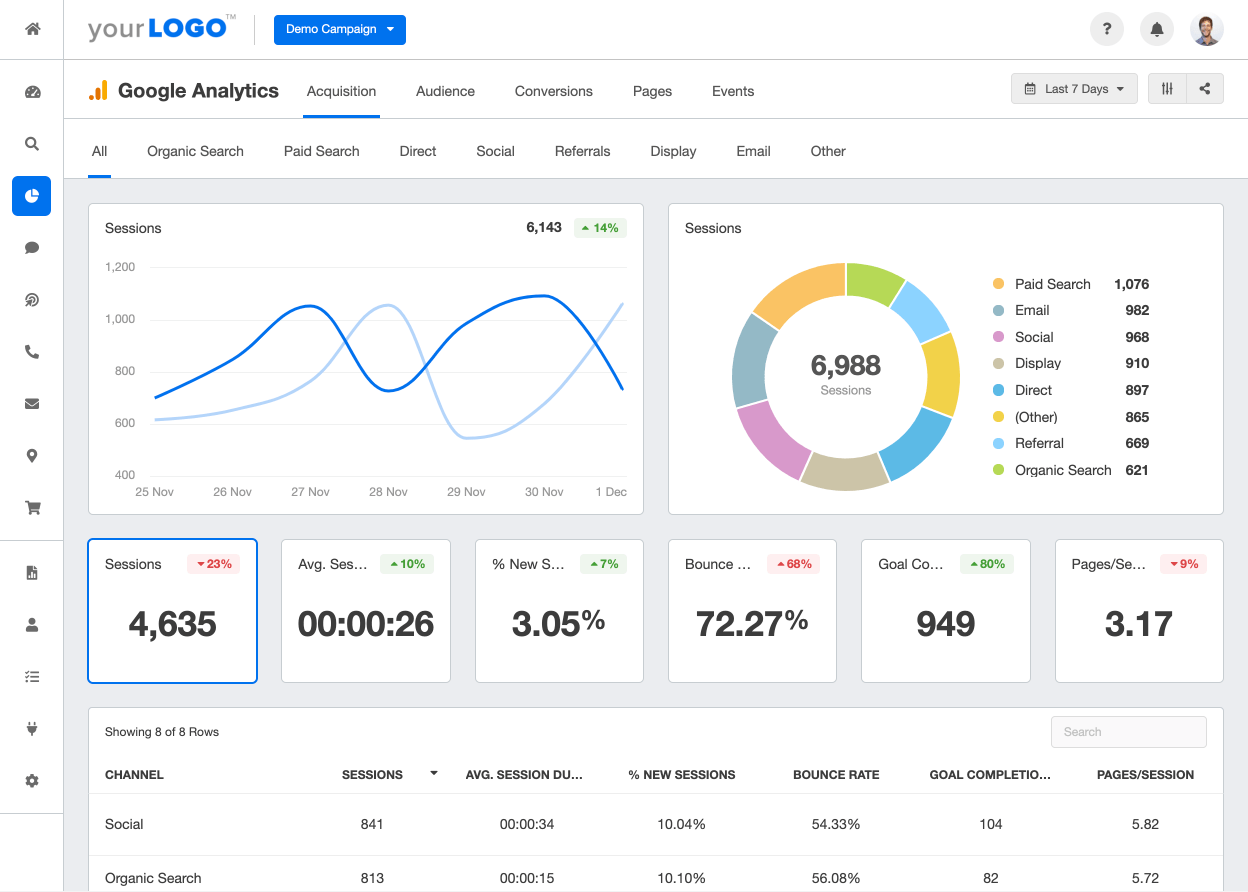
This tool allows you to track your website’s key metrics, engagement, and user behavior. It helps you to understand which aspects and sections of your websites work and which don’t.
Google Ads
Arguably, the most popular tool for managing digital ads in the world.
Google Search Console

Another tool from Google. This one helps you to keep track of the brand name mentions, clicks, transitions, and other KPIs.
Mentionlytics

Mentionlytics is a solution for tracking keywords and names in social media.
PR Fire
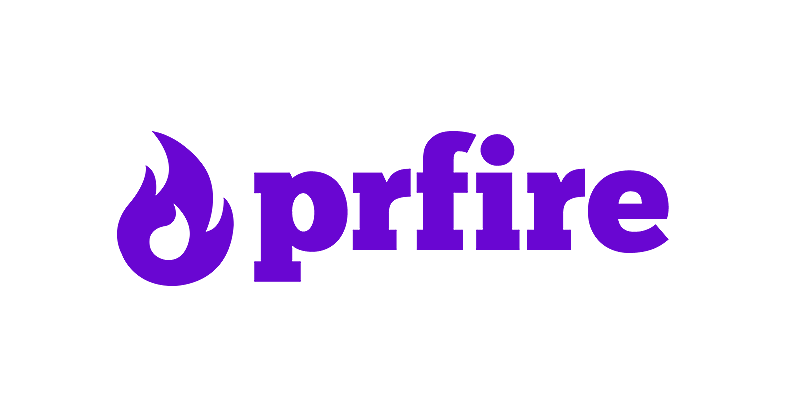
This is a professional tool for the distribution of press releases among journalists and monitoring their responses.
Determ

Determ is a great tool for monitoring brand mentions online and finding suitable influencers for partnerships.
Buffer

Buffer is a platform for scheduling and managing posts on multiple social media platforms at once.
SocialPilot

A platform for organizing posts and ads on Facebook, Instagram, Twitter, and a variety of other social media platforms.
Moz
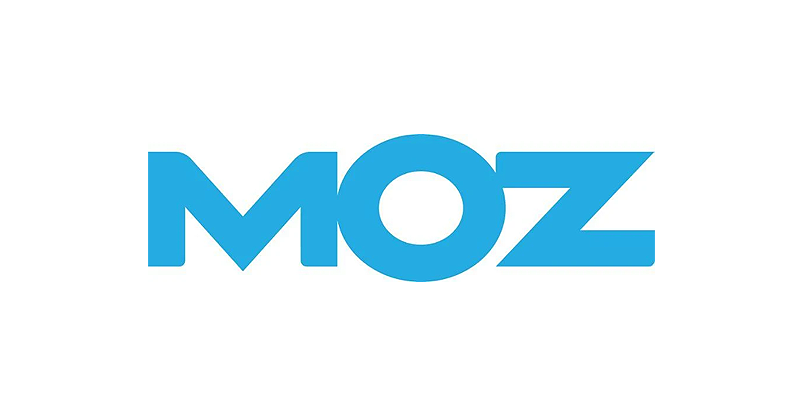
A professional tool for keyword research and audit of websites
Yandex.Direct

A similar service to Google Ads, but focused on the Yandex search engine.
And please note: we’ve only scratched the surface. There are dozens upon dozens of digital PR tools on the market, each suitable for a specific task or situation.
Is It Worth It to Outsource Your PR Strategy?
Developing and executing a good PR strategy is a fairly complex task. So using the services of a PR firm looks like an obvious decision. Let the professionals take care of public relations while you are preoccupied with the other business aspects.
However, it would be a lie to say that keeping an in-house PR team doesn’t have its merits.
Pros of an In-House Team
Economy (In Some Cases)
Some PR tactics, such as preparing press releases or email newsletters, you can handle without a PR agency or even an extensive in-house team.
However, with your company’s growth, it is often cheaper to outsource your PR strategy entirely since the overhead costs of an in-house team can make its work cost-inefficient.
Easy Communications
It is much, much easier to establish reliable communications with your in-house PR team than with a PR firm. And it is also much easier to supply the team with all the necessary information as soon as possible.
Easier to Find a Fit
With outsourcing of any kind, there is always a risk that the companies involved would simply fit badly. Friction in business processes, misunderstanding, and other similar issues can ruin even the most genuine and professional efforts at cooperation.
Higher-end PR agencies, however, usually can offer a lot of flexibility by making sure that the customer works with the employees they have the best fit with.
With an in-house team, it is easier to ensure that everybody works together as a team reasonably well. You hire these people yourself, so you have more control.
Pros of Outsourcing
Saving Money (In Most Cases)
Outsourcing public relations helps you save money on overhead expenses for the PR team. You pay only for the work done. Their office rent and other expenses are not of your concern.
Higher Level of Skill and Experience
There are plenty of extremely talented and experienced PR professionals in in-house teams, no doubt about it.
However, in specialized PR companies, you gain access to a higher level of expertise than the market average. PR firms hunt for high-level professionals with more fervor than most businesses. It is especially true for specialized niches, such as cryptocurrencies and fintech.
Great Reach
The core of any successful PR firm is connections in the relevant media. These connections allow them to establish positive relations with influencers and media outlets for you quickly and efficiently.
Specialized Skills
Unless your company is a multi-billion dollar corporation, it is really hard to cover all the specialized PR knowledge in an in-house team.
Expertise in the fields like crisis management in public relations or the use of very specific geos, tools, or media is rare on the market. Such specialists are usually concentrated in specialized firms. In such organizations, their expertise is in higher demand.
PR “On a Turn-Key Basis” Is Not Possible
Outsourcing your PR strategy to a public relations firm will take the majority of the load off your shoulders. However, you still have to put some work into media relations.
PR Training

PR agencies like ICODA offer training on public relations for both your personnel and management.
Things like:
- Preparing for a media interview
- Delivering key messages during interviews
- Responding to tough questions
- Post-interview conduct
And many others can’t be realistically handled by a PR firm. After all, the media always want to talk with CEOs and other officials directly, not with public relations personnel.
In addition, poorly handled communications, even by employees that aren’t supposed to interact with the audience, can have significant negative consequences.
Thus, media relations training should be taken very seriously.
Prepping
Events, media interactions, launches, AMA sessions, and various other events with the direct participation of the company’s executives are crucial for any PR strategy. It would be a huge mistake to participate in such an event unprepared. Take preparations for every event very seriously and work together with the PR agency on every case.
Information Supply
It doesn’t matter how good your PR agency is. Without information, it can’t do its job. PR professionals should know your overall goals.
In addition, it is advised to fulfill their request for information – professionals, in most cases, request only the data they need. Effective and prompt communication is a cornerstone of success and is the responsibility of both parties.
ICODA – A Comprehensive Approach
Both the development and the execution of a comprehensive public relations strategy are complex ventures that require methodical multi-faceted work over a prolonged period.
ICODA is a PR and marketing agency specializing in the fintech, crypto, and decentralized finance markets. We provide a full spectrum of promotional services for both new startups and established companies.
ICODA can take over the entire process of developing, implementing, and adjusting a strategy for your company promotion or provide specific services to cover gaps in your in-house capabilities. You will always get services of the highest quality.
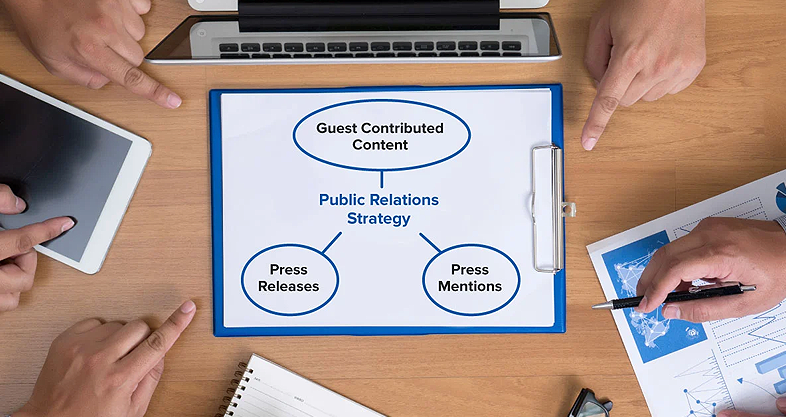




![CONF3RENCE 2025: Leading Web3 & AI Event [Promo Code ICODA20]](https://icoda.io/wp-content/uploads/2025/06/6203-23-1024x580.png)



